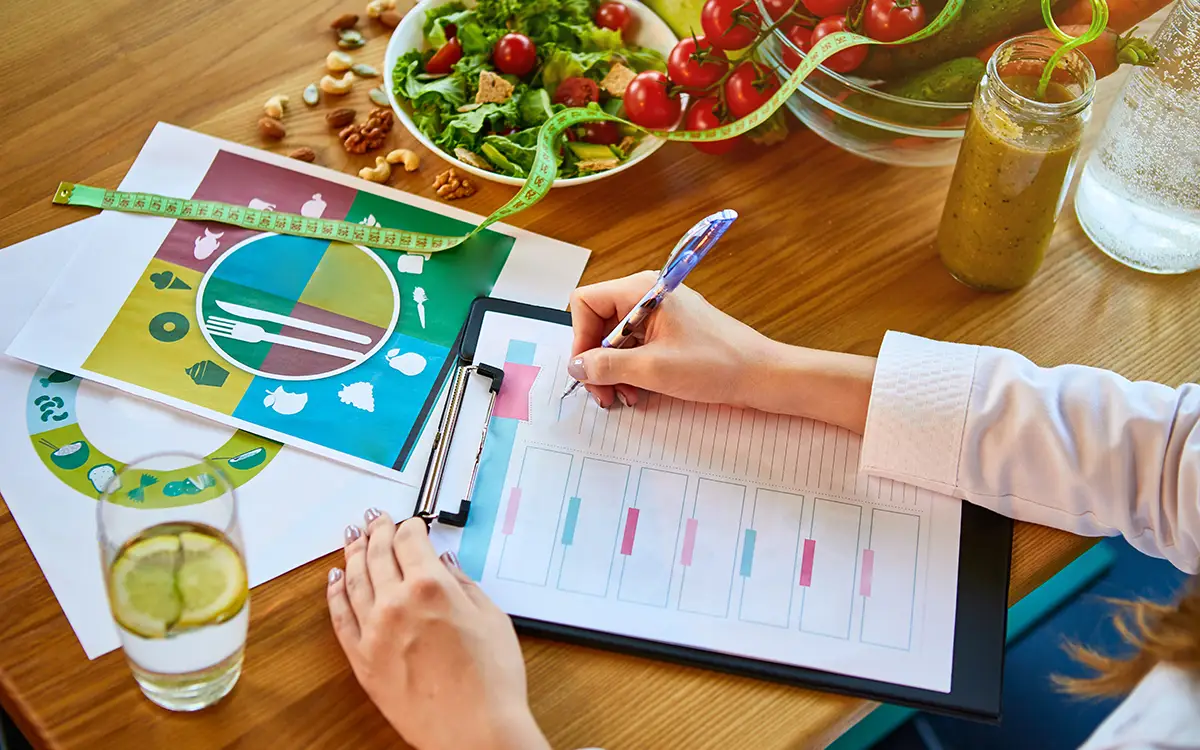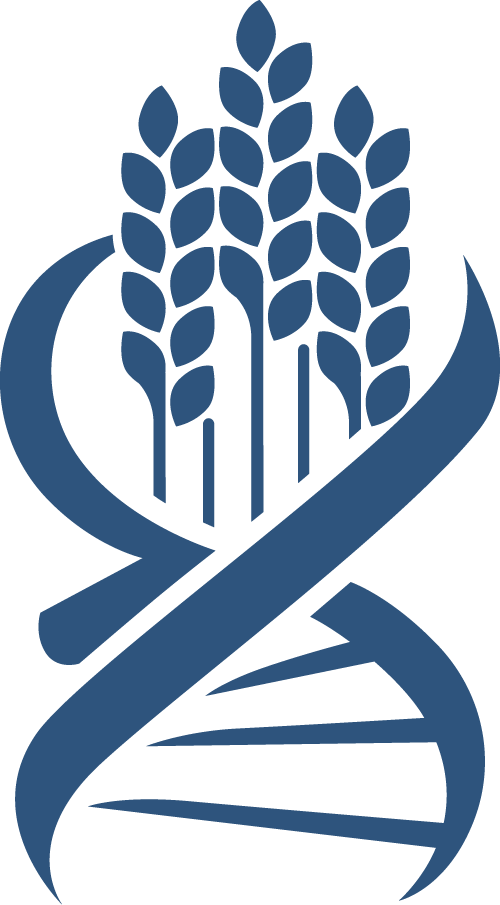new to the gluten free journey?
new to the gluten free journey?

Going gluten free can feel overwhelming and confusing, but once you know the basics, it will feel much simpler. So we are sharing this quick guide to beginning your gluten free journey along with a sample seven day diet plan. We’ll discuss:
Contents
ToggleGluten is the protein in grains that lends elasticity to bread and other baked goods. In fact, its name comes from the Latin word for glue since it gives flour a sticky consistency when it’s mixed with water, which ultimately gives bread a chewy and satisfying texture.
Gluten is often associated with wheat, rye, and barley. However, we know that gluten protein can be found in ALL grains. Common foods containing gluten include pasta, bread, baked goods, and beer, as well as many sauces, condiments, and marinades.
For those with a gluten intolerance or celiac disease, gluten can be incredibly harmful. Gluten can trigger an immune reaction causing inflammation in the intestines, but also in other organs, which can result in a host of other symptoms and health issues.
A gluten-free diet is necessary to manage the symptoms of celiac disease and non celiac gluten sensitivity. A gluten-free diet is also essential in order to allow the body to heal from the damaging effects of gluten.
For those who are sensitive or intolerant to gluten, failing to follow a gluten free diet can result in long term damage to the entire body, from the gut to the brain.
As an added benefit, going gluten free will reduce your exposure to the molds, mycotoxins, and heavy metals that are present in many grains. It will also encourage the consumption of nutrient dense healthy whole food carbohydrate sources like fruits and vegetables while excluding excessive carbs from processed grains and foods that are devoid of nutrients.
In addition to the internal benefits of going gluten free, many people notice significant relief of more obvious external symptoms like bloating, constipation, “foggy brain,” and more.
In general, whole unprocessed foods are naturally gluten free and also provide the most nutritional bang for your buck. When in doubt, think about food that doesn’t need ingredient lists or labels, like fruits and veggies, nuts and seeds, and proteins like grass fed beef, pastured poultry and eggs, and wild caught fish.
It is important to know that you cannot always rely on food labels to tell you what is safe to eat on a gluten free diet. Most manufacturers only consider wheat, rye, and barley as gluten containing grains, but we know that all grains contain some form of gluten and can be detrimental to your health.
In addition, be aware that foods prepared by someone other than you, either purchased packaged foods or foods served at a restaurant are subject to cross contamination. Cross contamination can happen when the same equipment is used to produce or package your gluten free food that is used to produce or package other gluten-containing products. Cross contamination may also occur in a restaurant setting. For example, a cook might use the same grill to grill the chicken in your dish that they use for a gluten-containing bun for somebody else’s burger.
Completely avoiding gluten can be challenging at first since it is found in many common ingredients that are added to foods and beverages. Below are some of the top foods to avoid (or vet very carefully) on a gluten free diet. For a comprehensive list, check out our Ultimate List of Gluten Containing Foods.
All grains contain gluten, but the definition of gluten for food labeling allows corn, rice, oats, sorghum, and millet to be labeled gluten free. Eating these grains is not recommended, as many studies show that they can cause persistent inflammation. Additionally, it is recommended that you avoid the pseudo grains like amaranth, quinoa, and buckwheat, as these foods have been shown to be cross contaminated with gluten and lead to inflammation.
The most common items that contain grains are bread, pasta, cereals, muffins, bagels, cookies, and cakes. But there are many more food items on this shortlist that commonly contain grains – gravies, croutons, bread crumbs, biscuits, rolls, pita, batter-fried foods, noodles, tortillas, ice cream cones, bran, wheat germ, dumplings, pancake mixes, pies, pumpernickel and rye breads, cornbread, vermicelli, doughnuts, buns, pretzels, spaghetti, waffles, and pastries. The good news is that many companies have started making gluten-free versions of these products. With gluten intolerance, you have to be extremely careful, even if the label says “gluten free”. Other grains like corn and rice are commonly used as alternative safe substitutes despite the research showing their detriment. Seek out baked goods or mixes that are grain free, like those from Simple Mills, or make your own at home with grain free flours.
Many common condiments and seasonings contain gluten in the form of fillers, emulsifiers (ingredients that make sauces smooth and prevent separation). The following foods should be eliminated from the diet unless they plainly state on the label that they are certified gluten free: Worcestershire sauce, MSG, modified food starch, malt products, bouillon, barley malt, and soy sauce. Also, be aware that many gravies and salad dressings are thickened with gluten containing flours and grains. You can make your condiments and dressings yourself with gluten free ingredients, or seek out brands that are reputable, grain free, and safe for those with celiac disease. Siete and Primal Kitchen brands are two good examples.
Most forms of alcohol are made from grains. At the top of the list are beer and malted beverages like wine coolers. It’s recommended that you proceed cautiously with any of the grain-based alcohols such as whiskey, certain vodkas, and gin. Many claim that these are OK because they are distilled, but clinically, patients continue to have reactions to grain-based alcoholic beverages. Additionally, alcohol slows the healing process and can contribute to other health problems. If you are going gluten-free because you are sick, drinking alcohol will not serve as beneficial to aid in your recovery. Some research shows that alcohol can make people more sensitive to gluten. It is best to stop drinking alcohol altogether when you are gluten intolerant.
Making the shift to a gluten free lifestyle can be a bit overwhelming at first, but you will quickly learn that there are so many healthy and delicious foods to enjoy and explore. Below we’ve outlined a sample seven day meal plan to demonstrate how diverse and delicious a gluten free lifestyle can be. This representative plan assumes you make a new dish for each meal, but we also love to double recipes so we have quick leftover meals!
Going gluten free doesn’t have to be too difficult. Give yourself the time to learn and apply the fundamentals, and watch your health flourish. Need more? Sign up for our free Glutenology© Masterclass here.
Stay up-to-date with the latest articles, tips, recipes and more.

*These statements have not been evaluated by the Food and Drug Administration. This product is not intended to diagnose, treat, cure or prevent any disease.
If you are pregnant, nursing, taking medication, or have a medical condition, consult your physician before using this product.
The entire contents of this website are based upon the opinions of Peter Osborne, unless otherwise noted. Individual articles are based upon the opinions of the respective author, who retains copyright as marked. The information on this website is not intended to replace a one-on-one relationship with a qualified health care professional and is not intended as medical advice. It is intended as a sharing of knowledge and information from the research and experience of Peter Osborne and his community. Peter Osborne encourages you to make your own health care decisions based upon your research and in partnership with a qualified health care professional.